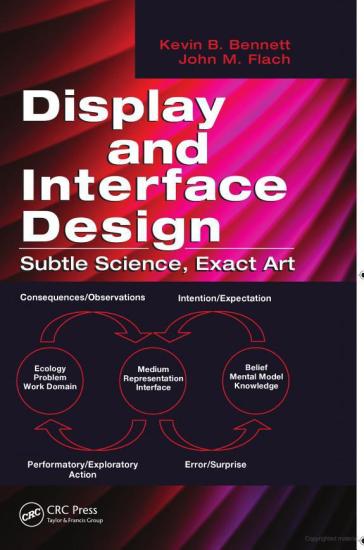
Summary:
"Technological advances in hardware and
software provide powerful tools with the potential to design
interfaces that are powerful and easy to use. Yet, the
frustrations and convoluted "work-arounds" often encountered
make it clear that there is substantial room for improvement.
Drawn from more than 60 years of combined experience studying,
implementing, and teaching about performance in
human-technology systems, Display and Interface Design: Subtle
Science, Exact Art provides a theoretically-based yet practical
guide for ecological display and interface design.Written from
the perspective of cognitive systems engineering and ecological
interface design, the book delineates how to design interfaces
tailored to specific work demands, leverage the powerful
perception-action skills of the human, and use powerful
interface technologies wisely. This triadic approach (domain,
human, interface) to display and interface design stands in
sharp contrast to traditional dyadic (human, interface)
approaches. The authors describe general principles and
specific strategies at length and include concrete examples and
extensive design tutorials that illustrate quite clearly how
these principles and strategies can be applied. The coverage
spans the entire continuum of interfaces that might need to be
developed in today's work places. The book includes access to a
web site containing examples of the dynamic properties of
displays.The reason that good interfaces are few and far
between is really quite simple: they are extremely difficult to
design and build properly. While there are many books available
that address display design, most of them focus on aesthetic
principles but lack scientific rigor, or are descriptive but
not prescriptive. Whether you are exploring the principles of
interface design or designing and implementing interfaces, this
book elucidates an overarching framework for design that can be
applied to the broad spectrum of existing domains"--Provided by
publisher.